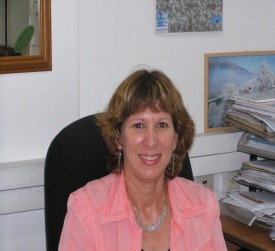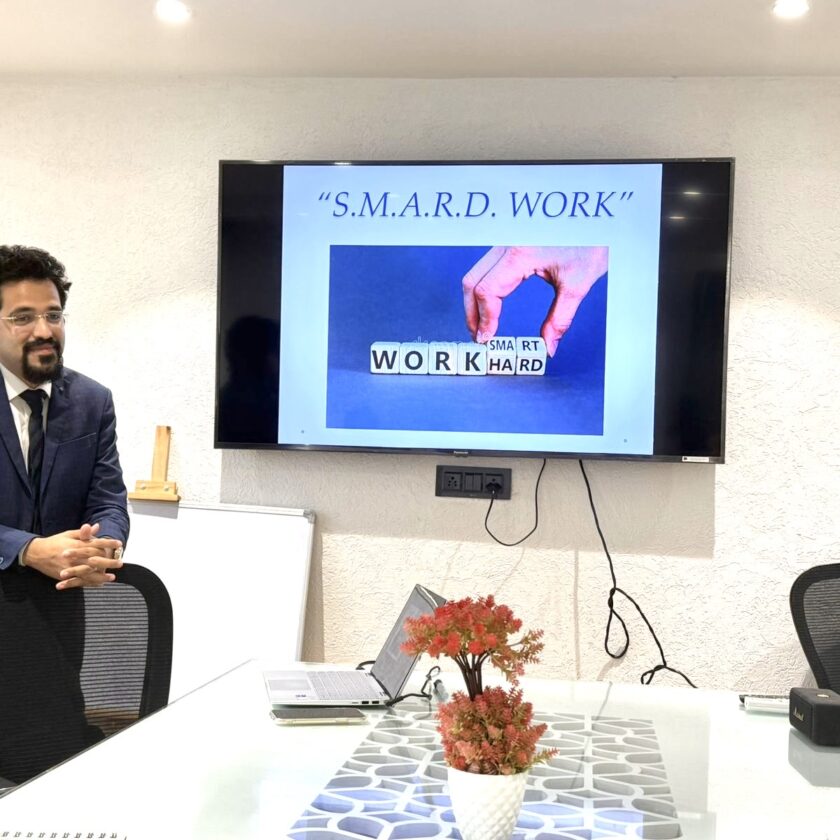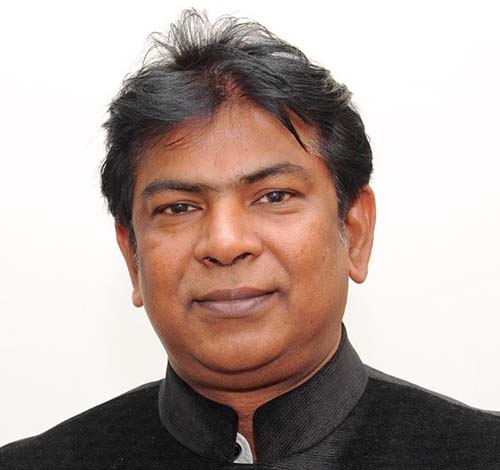By: Dr. Kumar Raka, Editor-ICN Group & Rebecca Brindza, Editor-ICN International
(Those who cannot remember the past are condemned to repeat it – George Santayana)
Tel Aviv: Earthquakes are one of the most devastating forms of natural disaster. They usually strike without warning, produce widespread damage, and can cause massive loss of life. The recent quakes that struck Haiti (2010), Japan (2011), Nepal (2015) and Iran & Iraq (2017) showed that temblors of sufficient magnitude can wreak havoc. The catastrophic situation often press demand for international assistance. There have been widespread debates in recent years amongst disaster management community and there is sufficient evidence that sending medical response teams as international assistance have been more useful in saving human lives rather than the deployment of large number of heavy international urban search and rescue (USAR) teams.
Despite heavy deployment of international USAR teams during earthquake of Iran (2003), Pakistan (2005), Indonesia (2009), Haiti (2010), New Zealand and Japan (2011) and recently in Nepal (2015); they were able to save lives of a very few survivors. Urban search and rescue providers are highly dedicated and skilled. The fact that they rescue few survivors is not because of lack of effort. But by the time they reach the scene of a distant disaster, most trapped victims have either been rescued by the local population or died. In contrast, a single field hospital which reached three days after the Haiti earthquake, staffed with 120 physicians, nurses, paramedics, and support personnel of the Israeli Defense Force (IDF) and provided medical response to injured victims during the next 11 days, admitted 737 victims, more than half with open fractures or severe soft tissue infections. Many were septic on arrival and probably would not have survived without aggressive intervention. The IDF team performed 243 major surgical procedures, at least 200 of which were deemed to be lifesaving. During this short time, the hospital treated 1,111 patients with problems ranging from major trauma to simple fractures, soft tissue injuries, infectious diseases, and obstetric and newborn emergencies. Similar results were achieved by other field hospitals. In addition, one heavy USAR team costs approximately $900,000 to deploy and the IDF spent about $1.7 million on its heavy field hospital in Haiti (Peleg & Kellermann, 2012), cost of deployment of two or more heavy USAR teams exceeds the cost of deploying a heavy field hospital.
Keeping in view the facts mentioned above and the ongoing debate within the disaster management community over importance of providing medical response teams as international assistance should be one of the top-most priority; we discussed the issue with Prof. Kobi Peleg, Chair WADEM and Dr. Bruria Adini, Board Member WADEM (detailed profile of the experts are given at the end of this paper) to understand in depth the best way out for providing optimal support to the affected community and the nation aftermath a devastating earthquake.
Founded as Club of Mainz in 1976 with goal of improving the worldwide delivery of pre-hospital and emergency care during every-day and mass disaster emergencies, following constant development of its scope and extension worldwide, and to better reflect its nature, the organization’s name was changed to the World Association for Disaster and Emergency Medicine (WADEM). WADEM is the oldest international emergency and disaster medicine organization with members from 55 countries and numerous disciplines including medicine, nursing, emergency management, academia, military, veterinary medicine, psychology and sociology as well as government and non-government organizations.
The views of Prof. Peleg and Dr. Adini over this debate are summarized as below:
Having vast experience in the field of disaster and emergency management, and also a member of UNDAC response structure, having participated & responded to various disasters worldwide; how you will be synchronizing your field experiences with the mission & vision of WADEM during your tenure as a Chair?
Prof. Kobi Peleg: Field work and academic/scientific/professional endeavors should always be connected to one another, otherwise the most important resource – knowledge, competencies, insights- cannot be effectively utilized. The lessons that I have learnt in my field work have enabled me to prioritize research activities as well as education initiatives. Bringing those insights to my role as WADEM’s Chairman of the Board has facilitated the ability to initiate the establishment of varied Task Forces (TFs) and Special Interest Groups (SIGs). These bodies collaborate with the membership as well as with other professionals in order to study varied phenomena and propose ways to improve the response to the different challenges. This relationship works bi-directionally, as the results of the studies that are implemented by WADEM’s directors and members are communicated to the field professionals through both publications (in PDM that is published by WADEM and/or in other scientific journals) as well as during WADEM’s regional or international conferences.
You have well explained in your article “Medical Relief after Earthquakes: It’s Time for a New Paradigm” that well-equipped medical teams & field hospitals are instrumental and more useful in saving precious human lives rather than specialized USAR teams as far as international assistance is concerned. Can you explain it and how you are going to contribute towards it as Chair WADEM?
Prof. Kobi Peleg: My article does not advocate the dismissal of professional USAR teams. On the contrary, we well know that these teams are highly competent professional bodies and have amazing capacities. The problem is that help to those who are trapped under the rubble in varied locations is needed immediately in order to save their lives. Despite the large numbers of USAR teams, they are not able to be available and accessible immediately in the massive areas that are severely impacted in varied natural disasters. As help is needed within a very short span of time, as has been shown in many publications, it is crucial to design a response that will be operational proximally. Accordingly, my recommendation is to train citizens in light search and rescue actions so that they can act as first responders when such a disaster occurs. Such a project has already been implemented in Israel; cohorts of citizens are being trained in numerous communities, as well as a national program for training all Grade 10 students in such tasks so that citizens with a minimal proficiency can be vital in saving lives. This is an excellent example of a fruitful collaboration between professional bodies, field responders and governance authorities, as the initiation of this project was raised by me following my field work as an UNDAC member, my experience as a scientist, and my work with varied national and international authorities.
Do you think USAR teams are not instrumental aftermath a disaster and the international community need to focus on developing their medical assistance capabilities? Or do you see a balance between both? UNOCHA needs to develop a parallel medical response unit like INSARAG is for USAR or the INSARAG should be converted into medical assistance teams? Or do you suggest any other alternative?
Prof. Kobi Peleg & Dr. Bruria Adini: We believe that both USAR and medical teams are needed in order to maximize saving lives. The balance between them should be defined according to the specific situations, time-frames of their activation, and the specific competencies that are needed. Keeping the balance between these two types of organizations should always be time-sensitive. There is no need to develop additional frameworks to what already exists. INSARAG does amazing work with the USARs and the WHO has made immense progress towards accrediting and improving the capacities of Emergency Response Teams (EMTs). What can always be improved is the coordination between all the different bodies which operate in the disaster-stricken areas. This is a vital element and is one of the main objectives of OCHA and UNDAC that operates on-site on their behalf. The Cluster Approach that was initiated by OCHA is very instrumental in this respect. Furthermore, complementary to USAR and the EMTs, there is a need to initiate mass training of the public in light search and rescue and life-saving medical procedures, so that they can immediately provide aid, even before the arrival of the formal organized professional responders.
USAR should be local and immediate. But how it could be justified that international Medical relief is more important rather than USAR teams after a devastating earthquake in terms of those poor nations who are still not capable of raising their own search and rescue teams and not able to meet their own requirements. We have seen the recent examples in Nepal and Iran both?
Prof. Kobi Peleg & Dr. Bruria Adini: It is always most important to have local teams that have the capacity to respond to the needs of the disaster-stricken communities, as it’s crucial that the response be provided rapidly. Local teams are vital as they will always arrive faster than any international forces. Nonetheless, as there is always a limit to local capacities, in both developed and underdeveloped countries, it is both necessary and practical to design such capacities internationally as well as establish mechanisms for coordinating the assistance provided by varied countries, NGOs and other responders. These international bodies are important, as in the majority of severe earthquakes, there will not be sufficient local teams to provide crucial aid to all those who urgently need such assistance. There is no essence in trying to “prioritize” or rank the importance of the different bodies, as all are vital. What is important is the understanding and in-depth conviction that the response should be well-coordinated so that the scarce resources are allocated effectively, in strive to save the largest number of salvageable victims.
It’s also important to stress that we do not think that USARs are not important. What I expressed was that the review of data from disasters has presented that the medical teams are the ones able to save lives. It is not USARs versus EMTs and they are not alternate to one another. They are rather complementary – starting with search and rescue and continuing to medical care. They have to work in an integrated manner.
Developing medical capabilities to assist the needed nation is important. As chair/ Board Member WADEM do you have any plans for that; specifically to collaborate with OCHA or WHO for creating something like INSARAG for providing medical assistance to the affected countries aftermath a major disaster/ catastrophe?
Prof. Kobi Peleg & Dr. Bruria Adini: WADEM has collaborated for many years now, and will continue to do so, with numerous organizations that are involved in disaster preparedness and responses. Most specifically, a very close collaboration exists between WADEM and the WHO. This is clearly visible in the participation of WHO officials in the congresses conducted by WADEM, as well as in the various SIGs and projects initiated throughout the years.
How the ethical, cultural and more importantly legal problems can be handled and streamlined for a swift and quick medical assistance on a foreign land. What roles OCHA and WHO can play? What contributions WADEM can make?
Dr. Bruria Adini: Ethical and legal constraints are often present in the response to varied emergencies, most especially when there are mass fatalities and morbidity. Cultural beliefs and norms may lead to potential conflicts concerning the appropriate measures of responding to the public health needs on the one hand while respecting local and at times, international customs. At times, licensure and accreditation regulations limit the ability to provide aid. Sharing insights, lessons learnt, perceptions and recommendations that are derived from previous experience is vital to the conceptualization of appropriate response and the design of mechanisms that may facilitate ways to overcome these challenges during future disasters. Joint committees consisting of WADEM members and professionals from other relevant bodies have throughout the years discussed such issues striving to achieve consensual guidelines. Such initiatives will continue, as new challenges continually arise.
Brief Profile of the Experts
Prof. Kobi Peleg is the Head of the National Center for Trauma and Emergency Medicine Research in the Gertner Institute, a full Professor, the Head (and co-founder) of the Disaster Medicine Management Department, and the Head of the Executive Master’s Program for Emergency Disaster Management in the School of Public Health, Tel Aviv University. In this capacity, Prof. Peleg leads research and education activities in various fields of trauma, with special interest in mass casualty events, disasters and terror-related injury, and emergency medical services (EMS). Prof Peleg is the Chair of the Board of directors for WADEM (World Association Disasters and Emergency Medicine).
Prof. Peleg was the Head of the IDF military Medical Academy (col.). Prof. Peleg served as the Head of the Civil Defense – Medical Branch, in the 1st “Gulf War.” He served in command positions in Israeli Field Hospital to the Armenian earthquake in 1988, the Rwandan civil war in 1995, the Haiti earthquake in 2010, and in the Philippines Typhoon in 2013. Prof. Peleg is one of the UNDAC experts and in this position served in the West Sumatra earthquake in 2009 and in Nepal earthquake in 2015 (in the WHO-EMT team). Prof. Peleg has served as a WHO consultant for national emergency systems, and lead mass casualty management courses for several organizations and governments such as the WHO, RAND Corporation, Italy, Vietnam, USA, and many more. Prof. Peleg has served as consultant for emergency and disasters preparedness for private companies, organizations, and ministries.
Prof. Peleg teaches disaster and MCI management, disaster medicine and EMS optimization along with additional related subjects at Tel Aviv University and at several other higher education institutions in Israel and abroad, including the European Master’s in Disaster Medicine (EMDM). Prof. Peleg is a faculty member and visiting professor at several universities. He has published almost 200 articles and chapters in leading journals and books, and he is a well-known speaker in the area of MCI management in prominent conferences worldwide. He is a member of editorial boards of several journals, serves in the National MCI Committee, and is a mentor in the EMT-WHO. Prof. Peleg served as a Senior Assistant to the Israeli Minister of Health and as a Member of the Executive Board of Magen-David-Adom (Israeli EMS).
Dr. Adini has a PhD in health systems management; involved in both field and academic emergency preparedness and response. She specializes since 1987 in preparedness and response of healthcare systems for mass casualty events and disasters. She served in the Medical Corps for 17 years including as head of the emergency hospitalization branch. For 3 years headed the Emergency Hospitalization Department in the Ministry of Health (MOH), and since 2000, served as a senior consultant on emergency management. Dr. Adini directed on behalf of the MOH, Ministry of Foreign Affairs and the WHO various training courses, aimed at developing and enhancing emergency management competencies among healthcare personnel. Dr. Adini is a faculty member of the Department of Disaster Management and Injury Prevention in the Tel Aviv University. She is a board member of WADEM and the Local Authorities Confronting Disasters and Emergencies (LACDE) and a member of the Israeli National Council for Trauma and Surgery. Dr. Adini researches various aspects of emergency preparedness and response, including advanced methods of evaluating capacities and utilization of social media in emergencies.






